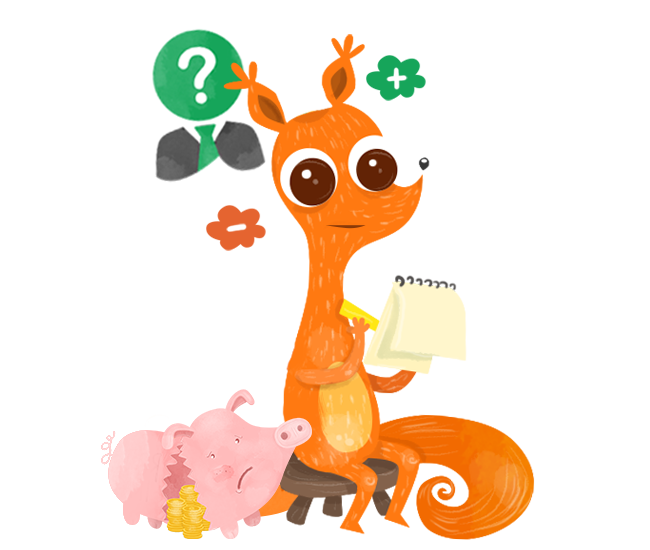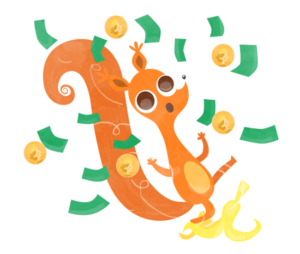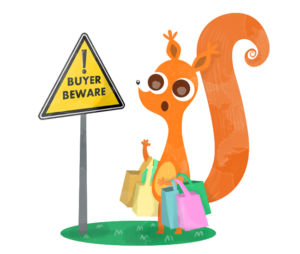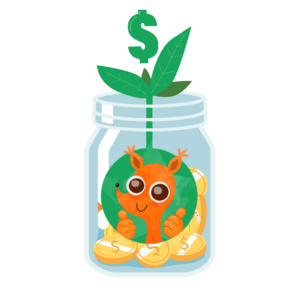
So, let’s talk about stagflation.
Yeah. It’s a weird word. Sounds like a made-up condition from a game of Monopoly that someone invented just to charge you more rent.
But sadly, it’s real. And while it might seem like something only economists and politicians need to worry about, stagflation has a sneaky way of showing up in your grocery bill, your gas tank, and your savings account.
The good news? You don’t need a finance degree to get what’s going on. You just need to understand a few basics, make some smart moves, and maybe cut back on those premium coffee pods for a bit.
Let’s break it down.

Stagflation is when the economy is kind of… stuck. Prices keep climbing, but growth slows to a crawl and jobs get harder to come by.
It’s like the worst combo meal ever.
You’re paying more, but getting less.
Normally, inflation and economic slowdown don’t hang out together. But when they do? That’s stagflation.
It happened back in the 1970s, and guess what? We’re seeing some familiar signs today.

Because people are feeling it.
Prices are still up. Interest rates are high. The job market has cooled off. And no one’s really sure what’s coming next. It’s not full-blown panic mode, but it’s definitely a little uneasy out there.
When prices rise but paychecks stay the same, when markets wobble but don’t climb, and when everything feels more expensive even though the economy is technically “fine”—that’s stagflation creeping in.
So if you’ve been wondering why your money doesn’t stretch as far lately, it’s not just you. The squirrels have noticed too.

Even if you’ve never said the word “stagflation” out loud, you’ve probably experienced it.
Here’s how it shows up:
You didn’t buy anything extra, but your bank balance still vanished. Groceries? More. Gas? More. Streaming services? Somehow more.
It’s like your money is evaporating in real time.
Markets don’t like confusion. And right now, there’s plenty of it. So don’t be surprised if your retirement accounts are bouncing up and down or just sitting still. That’s stagflation messing with the mood.
Credit card rates, car loans, mortgages—everything is pricier to finance. That’s what happens when central banks try to fight inflation by hiking interest rates. The idea is to cool down the economy. The side effect? Your monthly payments get a little hotter.
Big plans feel a little foggier. Should you move? Take that new job? Book that vacation? It’s harder to commit when prices are high, the economy’s murky, and no one seems sure what next month looks like.

Here’s the part where our wise squirrel self perks up. You can’t control the economy (unfortunately), but you can take steps to stay grounded when everything around you feels a bit wobbly.
You don’t need to become a spreadsheet wizard. Just figure out where your money is going, and whether it’s going where it should. Subscriptions, takeout, random late-night shopping—those acorns add up.
This is your safety net, your rainy day fund, your “when the car breaks down right before rent is due” fund. If you have one, give it a little love. If you don’t, now’s a great time to start. Even a small cushion can make a big difference.
You do not need to overhaul your entire life, but take a look at your big picture. Are your investments too risky right now? Are you saving enough for the goals that actually matter to you? A quick check-in might reveal some easy tweaks.
Not sure what needs adjusting? A free financial plan is a great place to start. No pressure, no jargon. Just clarity.
The squirrels who bury acorns in the fall don’t freak out in winter. They stick to the plan. You should too. Economic weirdness comes and goes. The smartest thing you can do is stay calm, stay consistent, and stay curious.
Stagflation is a mouthful, but it really just means the economy isn’t growing and everything costs more.
That’s annoying, yes. But not the end of the world.
With a few smart adjustments and a good understanding of what’s going on, you can keep moving forward—even when things feel stuck.
And if you’re wondering where to begin, a free financial plan can help you figure out what’s working, what needs attention, and how to build a little more peace of mind into your money.
Because the world may be unpredictable—but your plan doesn’t have to be.
YOUR FREE FINANCIAL PLAN
Are you ready to invest in your future?
Build your free plan today.
Start now